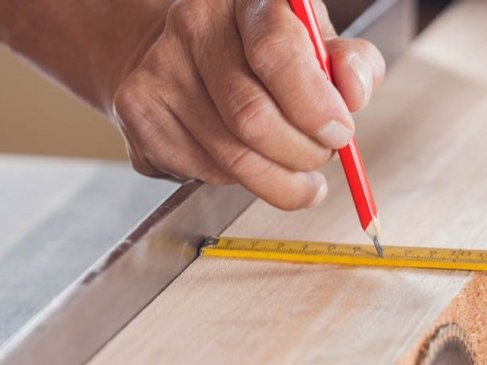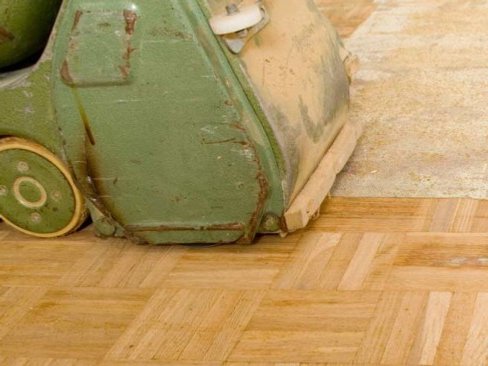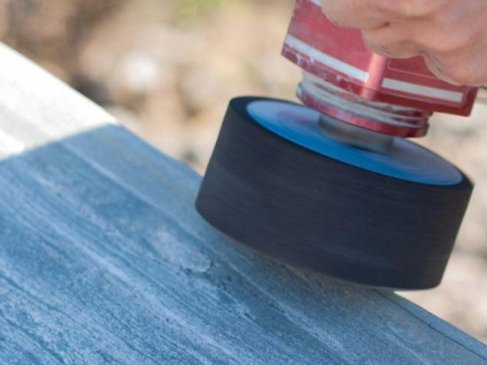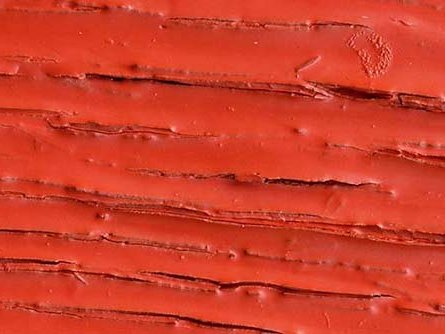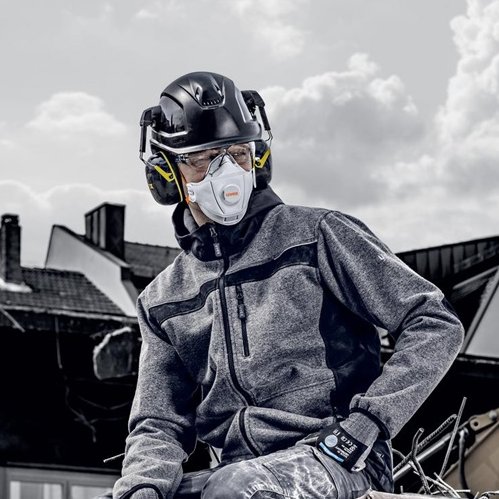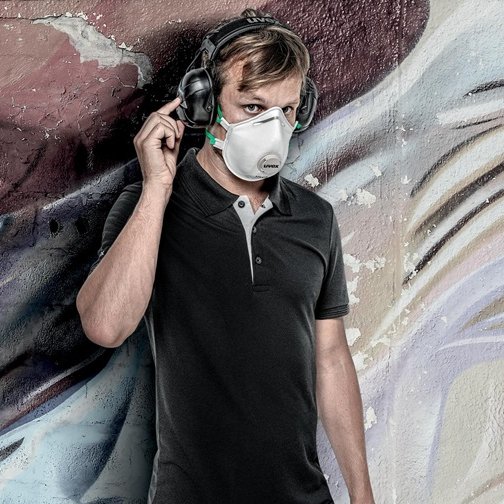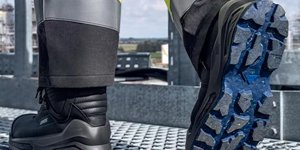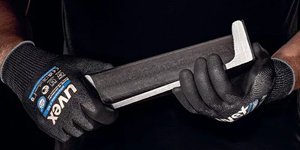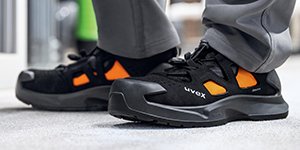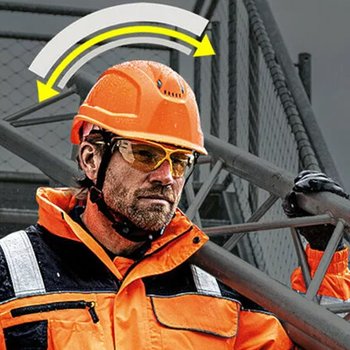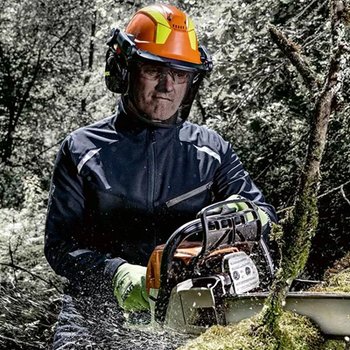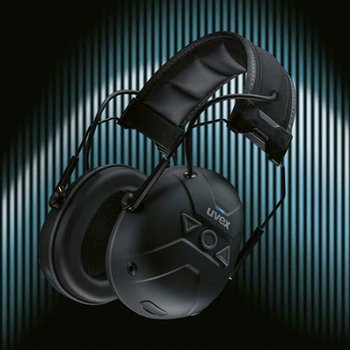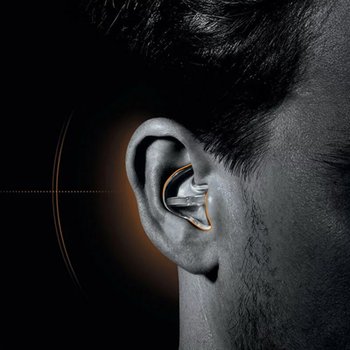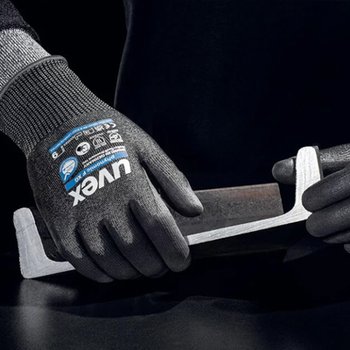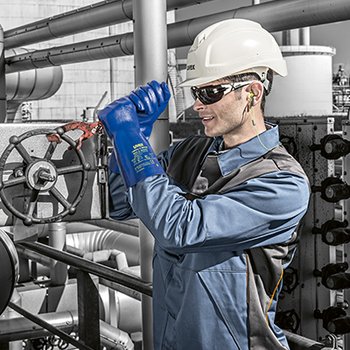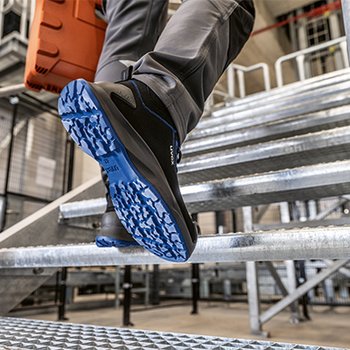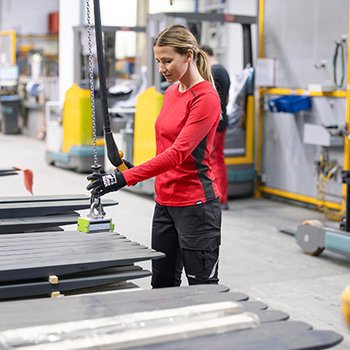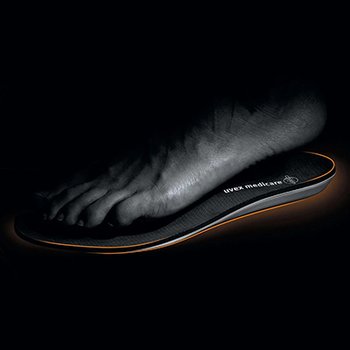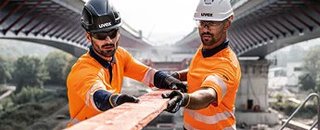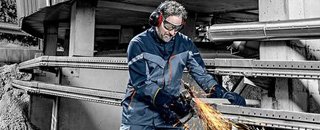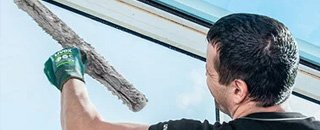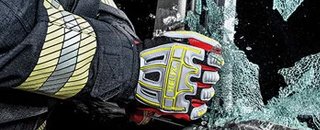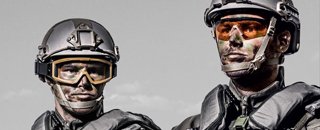
Respiratory protection for wood processing
The following includes further information for choosing the right breathing protection for work in wood processing.
The suggestion made here is only a general recommendation.
For a detailed analysis and selection of the correct mask, please refer to our selection guide:
Correct selection
Please do not hesitate to contact your relevant professional association should you have any queries or questions.
Softwood: cutting and sanding
Dust particles are a common consequence of working with softwoods such as birch, poplar and conifers. Sawing and cutting these woods creates a fine dust which, unlike hardwood dust, is not carcinogenic.
Protection class FFP2 respirators are therefore well suited to being used for activities involving softwoods (except for environments with extremely high dust exposure). You can find product suggestions for this purpose below. Please ensure all appropriate and requisite personal protective equipment (PPE) is worn, for example safety goggles and hearing protection as offered by uvex.

Hard wood (oak, beech, tropical wood, etc): cutting and sanding
Dust particles are a common consequence of working with hardwoods such as oak, beech or the many different types of tropical wood. Sawing and cutting these woods creates a fine dust which, unlike softwood dust, can be carcinogenic.
A respirator in protection class FFP3 should therefore always be used when working with hardwoods. You can find product suggestions for this purpose below. Please ensure all appropriate and requisite personal protective equipment (PPE) is worn, for example safety goggles and hearing protection as offered by uvex.

Brushing/sanding paint
Particular caution must be taken when brushing or sanding coats of paint on wooden surfaces as many paints (especially those that are older) contain hazardous materials such as copper, chrome and arsenic.
If there is any uncertainty about the type of paint being used, it would be advisable to err on the side of caution and wear an FFP3 respirator (only respirators in this protection class offer sufficient protection against carcinogenic particles such as chrome).
If you are certain that the paint contains no hazardous materials, choose a protection class FFP2 respirator (although a respirator in protection class FFP3 would be more suitable if dealing with hardwood which requires sanding and therefore presents risk of exposure to wood dust). You can find product suggestions for FFP2 respirators below. Please ensure all appropriate and requisite personal protective equipment (PPE) is worn, for example safety goggles and hearing protection as offered by uvex.

Brushing/sanding paint (paints containing chrome)
Particular caution must be taken when brushing or sanding coats of paint on wooden surfaces as many paints (especially those that are older) contain hazardous materials such as copper, chrome and arsenic.
If there is any uncertainty about the type of paint being used, it would be advisable to err on the side of caution and wear an FFP3 respirator (only respirators in this protection class offer sufficient protection against carcinogenic particles such as chrome).
If you are certain that the paint contains hazardous materials, it is imperative to wear a protection class FFP3 respirator. You can find product suggestions for this purpose below. Please ensure all appropriate and requisite personal protective equipment (PPE) is worn, for example safety goggles and hearing protection as offered by uvex.

Soluble paints containing copper/chrome/arsenic
Just as with sanding painted surfaces, particular caution should also be exercised when applying paints which contain hazardous materials such as copper, chrome or arsenic. If you are unsure as to what exactly the paint contains or, conversely, are aware of relevant hazardous materials in the paint, use a protection class FFP3 respirator.
You can find product suggestions for this purpose below. If you intend to spray paint, we highly recommend that a half or full mask respirator with a corresponding gas/vapour filter be worn. For more information, please call the uvex service hotline. Please ensure all appropriate and requisite personal protective equipment (PPE) is worn, for example safety goggles and hearing protection as offered by uvex.

Still haven't found the right one for you?
Find out more about uvex respiratory protection.
